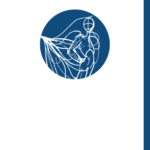Abstract
Il trattamento meccanico delle superfici e la rimozione del biofilm sopra e sottogengivale (Ablazione del tartaro; SRP) sono considerati gli strumenti più idonei per il trattamento di malattie infiammatorie parodontali, con l’obiettivo di distruggere il bioflim batterico, ridurre i batteri, e rallentare la ricolonizzazione da parte dei microrganismi patogeni. Spesso, però, il solo SRP non è sufficiente, in quanto ci sono pazienti che vanno incontro a recidive. Recentemente, la terapia Fotodinamica è stata suggerita come un potenziale strumento per migliorare l’esito del trattamento non chirurgico parodontale.. L’obiettivo del seguente studio è stato quello di valutare la guarigione clinica di tasche parodontali trattate con terapia meccanica, scaling e root planing, e terapia Fotodinamica, rispetto a quella ottenuta con la sola terapia meccanica non chirurgica.
MATERIALI E METODI:
Lo studio è stato disegnato come clinico controllato randomizzato. I pazienti del gruppo controllo (13 pazienti) sono stati sottoposti alla sola terapia non chirurgica convenzionale, mentre ai pazienti del gruppo test (13 pazienti) è stata associata al trattamento non chirurgico convenzionale, una seduta di terapia fotodinamica. Al baseline e dopo 1 e 3 mesi sono stati valutati i parametri di profondità sondaggio (PD), di sanguinamento al sondaggio (BOP), e la percentuale di sanguinamento (FMBS) La principale variabile di questo studio è stato il PD (profondità di sondaggio)
RISULTATI:
La PDT è stata efficace rispetto alla terapia S&RP. Solo allo scadere del primo mese i parametri parodontali nel gruppo test hanno evidenziato maggiore riduzione rispetto al gruppo controllo.
Conclusioni
La PDT al primo mese, rispetto la terapia S&RP, ha evidenziato un miglioramento dei parametri parodontali, probabilmente perché promuove la riparazione tissutale permettendo un’attivazione più marcata della risposta riparativa. Da questo si deduce e si consiglia che la terapia Fotodinamica si dovrà effettuare nuovamente allo scadere del 3 mese dalla fase iniziale del trattamento parodontale non chirurgico.
The mechanical treatment of surfaces and the removal of supra- and subgingival biofilm (scaling of tartar; SRP) are considered the most suitable tools for the treatment of inflammatory periodontal diseases, with the aim of destroying the bacterial biofilm, reducing the bacteria, and slowing down recolonization by pathogenic microorganisms. Often, however, SRP alone is not enough, as there are patients who undergo relapses. Recently, photodynamic therapy has been suggested as a potential tool to improve the outcome of non-surgical periodontal treatment. The aim of the following study was to evaluate the clinical healing of periodontal pockets treated with mechanical therapy, scaling and root planing , and photodynamic therapy, compared to that obtained with non-surgical mechanical therapy alone.
MATERIALS AND METHODS: The study was designed as a randomized controlled trial. The patients of the control group (13 patients) underwent conventional non-surgical therapy alone, while the patients of the test group (13 patients) were associated with the conventional non-surgical treatment, a session of photodynamic therapy. At baseline and after 1 and 3 months, the parameters of probing depth (PD), bleeding on probing (BOP), and bleeding rate (FMBS) were evaluated. The main variable of this study was PD (probing depth )
RESULTS: PDT was effective compared with S&RP therapy. Only at the end of the first month did the periodontal parameters in the test group show a greater reduction than in the control group.
Conclusions: PDT in the first month, compared to S&RP therapy, showed an improvement in periodontal parameters, probably because it promotes tissue repair allowing a more marked activation of the reparative response. From this it can be deduced and it is recommended that the photodynamic therapy must be carried out again at the end of 3 months from the initial phase of the non-surgical periodontal treatment.

This work is licensed under a Creative Commons Attribution-NonCommercial-NoDerivatives 4.0 International License.
Copyright (c) 2023 Journal of Advanced Health Care






